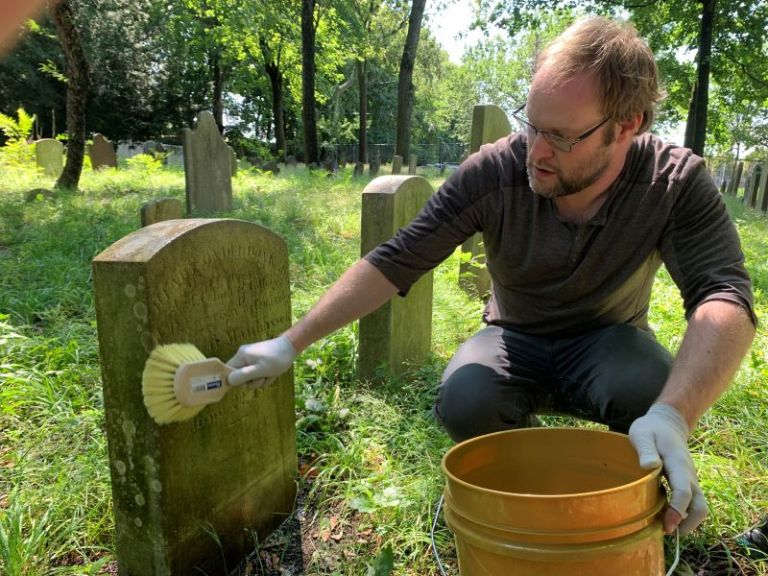
The Town of North Hempstead was proud to host an ambitious summer fellowship program, funded by the Robert David Lion Gardiner Foundation, to support projects commemorating the 250th anniversary of American Independence.
As part of the program, 26 college students were assigned to various municipalities throughout New York State to help preserve the rich history of America.
The program is headquartered at the Geneseo Center for Local and Municipal History under the supervision of Professor Michael Oberg in the Department of History. He has been sharing his energy and expertise with student Ryan Margiotta and North Hempstead’s Town Historian Ross Lumpkin to facilitate their research.
In August, Oberg visited North Hempstead for a tour of the historic sites where they had been working: the Sands-Willets House and Museum, the Dodge Homestead, and the Monfort Cemetery. “All of these local sites are Town of North Hempstead landmarks and on the national registrar of historical places,” commented Lumpkin.
As part of the summer fellowship there were two core projects. One was to identify primary sources that could be used in K-12 classrooms by educators to present lessons on the occupation of Long Island during the war.
Additionally, a research component included identifying artifacts at the Port Washington Public Library and the Roslyn Landmark Society.
The most notable discovery was a pardon granted by King George III to Patriot Thomas Dodge in 1776. Dodge, an avid patriot, continued to be an active participant in the resistance throughout the British occupation of Long Island.
“When my fellowship started in June,” Margiotta recalled, “I had no idea how dramatic the events of the Revolutionary War were in Hempstead during the occupation of Long Island. How the conflict between patriots in the north and loyalists in the south was so bitter that New York State felt compelled to divide Hempstead into two separate Townships when the war was over.”
The other project was to create a map of the Monfort Cemetery where the Sons of the American Revolution have identified 12 Patriot gravestones. This is a challenging project, as many of the stones are illegible, have been moved, or are in fragments. The restoration efforts included using a biological cleaning solution that was developed specifically to clean gravestones.






